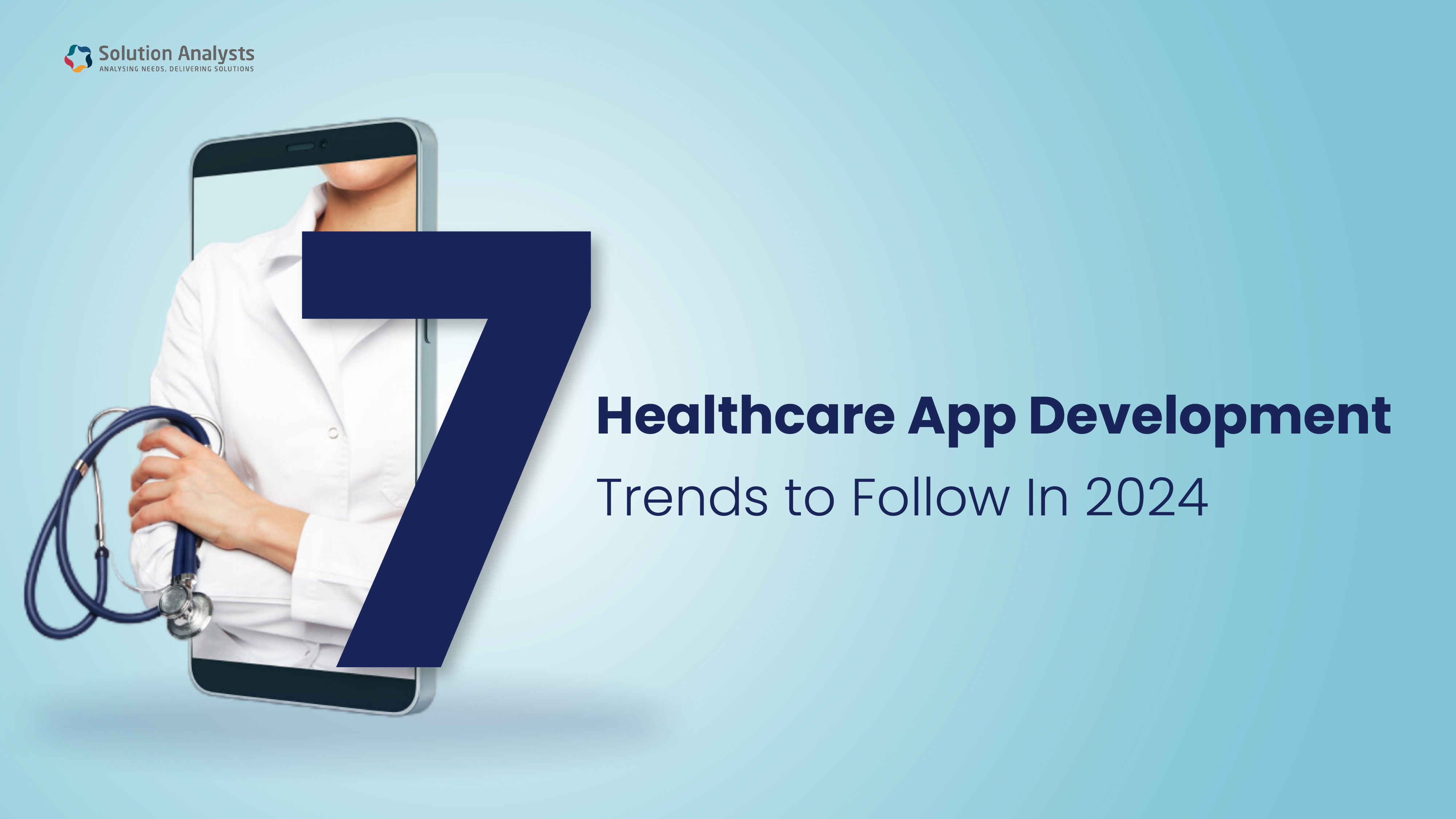Artificial intelligence has changed the way we live and work. The comfort of finding anything on our phones has taken away all of our worries and changed our life>
Telemedicine has been benefiting highly from network technology and helps patients save their in-person visits. The innovative idea of telemedicine helps to democratize access to healthcare technology and makes access available to everyone.
Many factors play a key role in the rise of telemedicine. The invention of the Internet, cellular networks, and mobile phones has made it easier for patients and healthcare providers to connect virtually. The COVID-19 pandemic has also boosted our reliance on smartphones for our everyday needs. In this blog, we will delve into healthcare app development trends and technological advancements.
Current State of Telemedicine
Telemedicine has quietly become a popular service to mainstream components of healthcare systems around the globe. The current state of telemedicine showcases significant advancements in technology and policy. The adoption of telemedicine has surged because of both increasing patient demand and the unavailability of doctors in remote areas.
Technological Advancements
Technological advancements have played a vital role in the rise of telemedicine. High-speed internet and smartphones with fast processors have made streaming smooth, and video conferencing technology has made virtual consultations more feasible and practical.
Regulatory Changes
Government authorities have developed new policies to facilitate healthcare services. Multiple licenses are available for organizations to start operating in the space. These changes have removed significant barriers to the adoption of telemedicine.
Multiple Types of Applications
Telemedicine has multiple specialty applications that focus on different services. Primary care, mental wellness, health, and fitness are some of the most famous examples of these applications. There is also a whole new avenue of applications used by healthcare workers to provide better care to their patients.
Trends in Telemedicine
Artificial Intelligence
Artificial Intelligence has revolutionized the healthcare industry. AI has personalized patient care, diagnostics, and streamlined administrative care. There are many ways through which AI is changing telemedicine. AI algorithms can analyze vast amounts of medical data and train on extensive datasets. They can analyze X-rays, MRIs, and CT Scans and detect medical conditions.
Virtual Assistants
AI-powered personalized health assistants are becoming common. These assistants can perform a large number of tasks, from answering queries to scheduling appointments and providing reminders. They can also gather firsthand information by asking a series of questions.
Remote Monitoring
AI-enhanced remote monitoring systems are crucial for chronic diseases. Wearable devices can collect continuous data and provide information about a patient’s condition to reporting doctors. These AI algorithms can also run analyses and detect any anomalies in the pattern.
Personalized Care
Personalized care heavily relies on patient data. Telemedicine applications can collect different types of data and improve patients’ outcomes. Using data-driven insights, tailored treatment plans can be created for chronic conditions. This personalized approach ensures patients get the most appropriate treatment.
Chronic Disease Management
AI can help detect and manage chronic disease with personalized care. Tailoring treatment plans and interventions to each patient’s specific needs for conditions such as asthma and TB can be helpful. It can also help reduce hospital readmissions and enhance quality of life.
Cross Platform Functionality
Cross-platform functionality refers to the accessibility and compatibility of telemedicine applications with multiple devices. This includes seamless useability across smartphones, tablets, laptops, desktops, and computers. Healthcare providers benefit from cross-platform functionality as it lets them use the device of their choice. This helps them access patients’ data on the go and communicate with them.
Wearable Devices
Wearable devices continuously monitor an individual and provide personalized care. Some famous wearable devices include a smartwatch, fitness tracker, and glucose patches. They use IoT to run real-time data monitoring of a person and give a measurable matrix.
Consistent Security
They are ensuring consistent security and privacy across different platforms. Telemedicine applications are supposed to be compliant with data protection laws, such as HIPAA in the USA. Implementing uniform security and encryption standards across all devices safeguards the patient’s data.
Scalability
A cloud-based infrastructure can scale to provide flexible and adjustable storage capacity. Independent servers and developers can upgrade and deploy the specific scales to components without affecting their system. This approach helps increase agility and resilience.
Integration
Integrating a massive amount of data becomes increasingly complex with time. Scalable solutions and distributed databases can process the data faster and retrieve the required data whenever necessary. Also, integrating the health records with the patient’s universal records requires integrations with third-party applications.
User Centric Design
User-centric design can effectively result in telemedicine applications. Intuitive UI (User Interface) and UX (User Experience) make the design more visually appealing. Transparent menus, buttons, and navigation use consistent colors so users can find them quickly.
Virtual Reality
Virtual reality will create more immersive experiences and encourage more virtual consultations. VR will also enhance communication, patient engagement, and medical training, providing a new avenue for healthcare education and treatment.
Future Predictions
Telemedicine will continue to evolve beyond primary care; a wide array of specialties will encompass it. AI and ML technologies will play a vital role in the next generation of healthcare applications, which will continue to analyze vast amounts of data. Blockchain technology will also improve data security and ensure that patient data is maintained transparently.
Telemedicine will bridge healthcare gaps in remote areas, providing access to healthcare services where traditional infrastructure is not available. Driven by its cost-effectiveness, telemedicine will transform healthcare delivery worldwide.
















